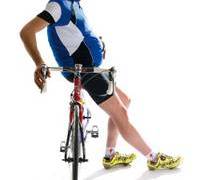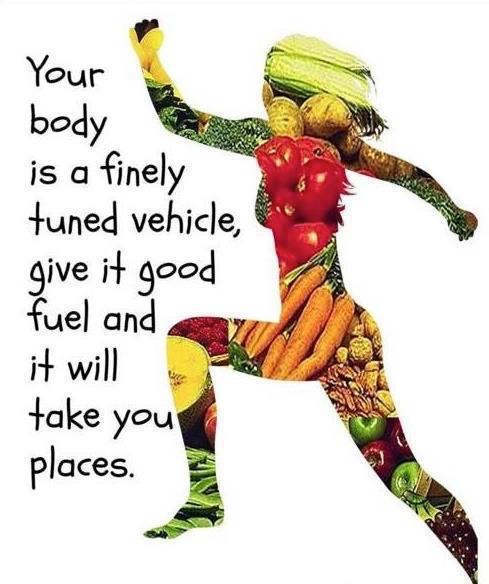As athletes, we want to be leaner come race day but the challenge is trying to get the body into that fat burning mode…but not only when we are racing. One thing we don’t consider is what we do outside of race day – if our diets consist of more carbohydrates, then we will burn more sugar period. If we have trained our body to burn fat, not sugar when not training, then when we are racing our bodies burn more fat not sugar (and we won’t have to consume as many calories while racing or suffer from GI distress).

Many of the athletes I work with are consuming more carbohydrates in their meals than they need to. From the food diary logs I see, they are fueling on high grain meals with very little protein or green vegetables and rarely do they eat root vegetables or legumes. They figure “I am training so I can eat whatever I want!”. But in reality, what you eat every day is creating more of a fat storing machine rather than a fat burning one. I help to change the food intake, the balance of nutrient in those meals and usually the timing of the meals, and the body can change to a more fat burning mode.
For most of us, eating ‘healthy’ is what we strive for. Many of my clients come in with some ‘healthy’ meals as part of their nutrition plan, but the meals are not balanced meals. The meals do not have the right combination of high quality proteins, high quality carbohydrates, fats or green vegetables. For each person, this combination is going to be a bit different – some will include animal proteins, others will not; some will include some grains, others only root vegetables. But most meals need a bit of each of those components in it to keep the blood sugars balanced throughout the day. Mismanage that blood sugar (like eating a bagel with cream cheese which is basically all carbohydrates/sugars), and your body will not only store fat from the extra calories it cannot use now, but you spike the blood sugar and will be really hungry 2 hours later when that blood sugar drops drastically. Change that bagel to a whole grain one and it is a hair better. Eat only half, but add some turkey and cucumber slices or handful of spinach and we have a different story. The blood sugar is balanced and we don’t over-consume and more satisfied for longer periods between meals. This also helps get the body into that fat burning mode. We don’t eliminate the carbs, we change the kinds of carbs and limit the quantity in each meal.
Another example of an unbalanced meal is a great big salad with lotsa vegetables and some grilled chicken on it. This is a fabulous healthy meal, but it is not balanced. It is missing the carbohydrate to raise that blood sugar – which is also why you are starving 2 hours after that awesome salad. Add half a sweet potato, or ½ cup of brown rice, quinoa or chickpeas and that will help to balance the blood sugar and make that meal more complete. Eating with balanced meals will help to balance that blood sugar so the body starts to burn fat, not store it. Once you have this balance, you may find that you will consume less calories per hour when you are training, and you will consume less during each meal, too. Your body will start using your own fat stores for energy rather than blowing thru the glycogen stores and increasing your needs for more sugar.
I had two clients last year who were both training for their first Ironman distance event. One I worked with and helped him change his diet, lose 27 pounds. He toed the line at 160 pounds, 6 feet and consumed about 175-225 calories per hour during the event on average. The other was a female who just came in for Race Day Nutrition. She had been training on 400+ calories per hour, mostly sugars and her every day diet was high on carbs, low on balanced meals. I suggested she lower the calories per hour to 250 calories, but because her diet was not optimally balanced, she needed to consume more carbohydrates and calories during her event. She also suffered the GI distress and had to vomit in order to feel better and finish the event. This is a down side to consuming high sugars and too many calories per hour. But if you train your body to use sugar, you have to consume sugar. If you train it to burn fat, then when you train and race, you will not need as many calories to continue at a higher output. The body will naturally need less sugar as it is using its own stores of fats for energy. This is what we want.
With the racing season nearing, it may be a good idea to review that everyday nutrition plan, get the meals in balance so come race day, so your body will use fat for fuel not carbohydrates and sugars. With a little extra balance, you may be surprised at how you feel and how you recover. You may also be surprised at how much better you perform on fewer calories! You can look and be lean by race day with a little balance in your meals.
Joanna K Chodorowska, BA, NC is a sports nutrition and competitive triathlete. She founded Nutrition in Motion specializing in personalized nutrition programs for athletes, triathletes and health minded individuals including Race Day Nutrition, Anti-inflammatory and Gluten-free plans. If you cannot live with your plan, it is not the right plan! To schedule your Race Day Nutrition session, go here.
Real Athletes + Real Food = Real Results!
Joanna’s website is www.nutrition-in-motion.net or 215-272-6774 for more information.